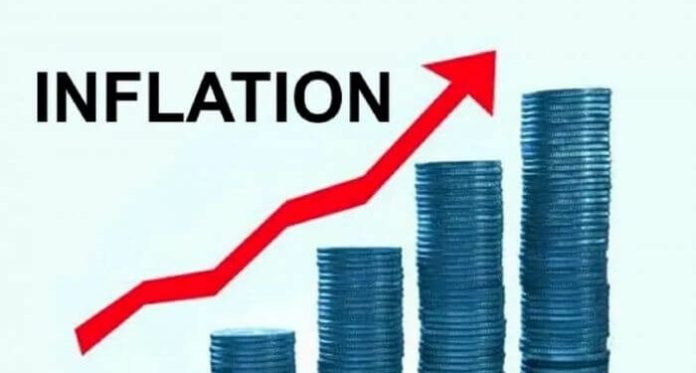BY UDDIN IFEANYI
THE inflation figures for last month released, last week, by the National Bureau of Statistics (NBS), shocked market analysts on the upside. Which is surprising. In thinking about domestic price movements, one could average the headline inflation rate over the second and third quarters of this year, and because the latter is much lower than the former, project a point of inflection over the coming months where the rate of domestic price movements starts to slow down. This is, apparently, what most analysts appear to have done. On the other hand, one could put check marks on the diverse recent price pressure points (petrol price increases, flooded farmlands, and new national minimum wage) in the economy and conclude that rising domestic prices still have a long way to go.
Why do I think domestic prices will continue to rise for a while yet? At the street level of analysis, most domestic entities favour the latter interpretation of events. This is why the economy’s long-term inflation expectations will continue to run ahead of the central bank’s inflation anchor, compelling the monetary authority to keep its policy rate “higher for longer”. At 33.88 per cent on an annual basis, the headline inflation figure for October was 1.18 per cent up on September’s figure. Furthermore, just about every part of the basket with which the NBS computes the inflation index rose in October. As a measure of inflation momentum, the month-on-month inflation figure for last month, 2.64 per cent (from September’s 2.52 per cent), should worry us even more.
How does this thwart the Central Bank of Nigeria’s (CBN) pursuit of its price stability mandate? Does this raise questions about how much of the required tightening of domestic monetary conditions the economy can take before it reaches a different and more frightening point of inflection? Does it eventually swing the conversation around the stickiness of domestic prices away from the monetary to the fiscal side of the larger economy? The answers to these questions are: very much so; yes; and yes. For a while now, I have taken a technocrat’s view of the monetary policy challenge facing the economy. Simply put, the Central Bank of Nigeria’s primary goal is the maintenance of domestic price stability. And for this task, it has only one tool — its policy rate. So, if inflation rises, the central bank is expected to put its benchmark rate up until the economy slows down enough to take the sting out of rising prices.
This dynamic has consistently failed to include a further consideration, however. If a third-party continuously adds fagot to the economy’s furnaces, what effect will the tightening of monetary conditions have? The answer to this question, alas, is none. Given that over the past decade, the Federal Government’s finances have played a key role in distorting domestic price signals, the release, recently, of its 2025-2027 Medium Term Expenditure Framework and Fiscal Strategy Paper is a good place to start looking for signs of the economy’s desired next point of inflection. Except that the numbers contained in the strategy plan are worrisome. You could blame “low government revenue” for constraining “the ability of government to meet its fiscal obligations over time” as the strategy paper does. But whatever happened to cutting one’s coat according to the size of the available fabric?
The fact that the Federal Government continues to run an unsound fiscal deficit does not lie at the heart of Nigeria’s macroeconomic conundrum. Nor does the fact that the government’s recourse to domestic borrowing to finance the fiscal deficit continues to crowd out private sector borrowing, and to impede the increases in productivity associated with this. Our problem, one that has been with us almost since we attained flag independence, is that the huge deficits that our governments continue to rack up have had no noticeable impact on domestic productivity. In other words, these deficits continue to place inflationary pressures on the economy.
All of which raise concerns about the numbers in the strategy paper. A quibble. The paper estimates inflation averaging 27.85 per cent this year; but acknowledges that in the first six months of the year, it averaged 32.8 per cent. Sheer optimism? The paper oozes with it — as have previous iterations. We are told that the “CBN projects a stabilisation of the naira exchange rate at N1,400 per US$ over the medium term”, for instance — without being told how far from our present vantage this medium term is. Does it matter that the government continues to struggle to meet its crude oil production target volumes? True, the “significance of crude oil and gas production in the Nigerian economy has reduced significantly in recent times”. But the sector was always an exclave of the economy, useful only as a source of dollar receipts — a function that it has met in the breach, again, over the past decade.
The Federal Government may well celebrate nominal increases in its non-oil revenues. But need we remind ourselves that government is not just a collector of levies, tariffs and taxes, and that where it chooses to so describe itself, the resulting entity is not always a useful one. The big question, still unanswered after more than six decades of political independence is, “How can we drive increases in domestic output, and in productivity levels that then redound to the benefit of government’s finances?” Today, to this query, there is only one practical response: “By radically reforming government’s purpose, its organisation, and management”. Thus far, there is scant evidence of this process. Nor of a commitment to it.


